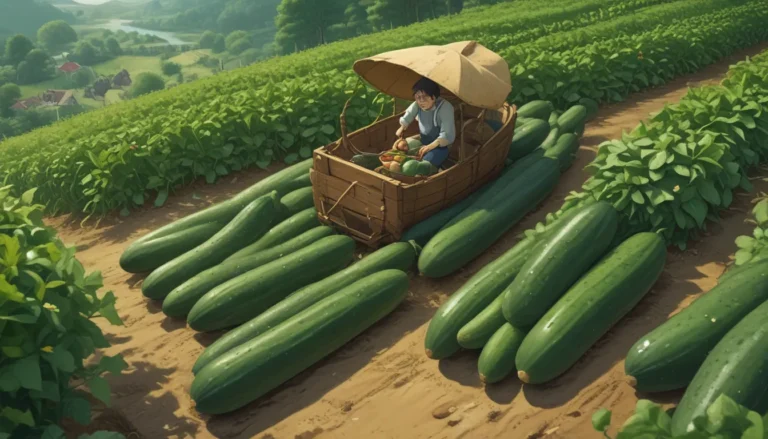Understanding Catfacing of Tomatoes: Causes, Prevention, and Solutions

Tomatoes are a staple in many home gardens, and there’s nothing quite like growing your own juicy fruits to enjoy in salads, sauces, or simply as a flavorful snack. However, sometimes, your tomato plants may produce deformed fruit that can be alarming. If you’ve noticed oddly shaped, scarred tomatoes on your plants, you may be dealing with catfacing.
Catfacing is a common disorder in tomatoes that can cause deformities on the blossom end or sides of the fruit. While it may not affect the edibility of the tomatoes, it can lead to significant losses in yield and make it challenging to sell or showcase your produce. In this article, we’ll delve into what catfacing is, what causes this deformity, and how you can prevent it in your garden.
What Is Catfacing of Tomatoes?
Catfacing got its name because the deformity sometimes resembles a small cat’s face. It’s important to note that catfacing is not caused by insects or pathogens but rather by cultural issues in the garden. The result is tomatoes with large indentations, scars, and misshapen appearances on the fruit.
Even if the tomatoes have not split open, they are still considered to have catface if they exhibit this type of deformity. While it may not impact the safety of the fruit for consumption, it can affect the marketability of the produce.
What Causes This Deformity?
Several factors can contribute to the development of catfacing in tomato plants. Understanding these causes can help you take preventative measures to minimize the likelihood of this disorder affecting your crop:
Abnormal Temperatures
- Cool weather dipping below 60°F before the plant blooms can interfere with normal flower development and lead to catfacing.
- Abnormally hot weather and wide temperature fluctuations between day and night can also induce this condition.
Disturbance to the Flowers
- Physical damage to flowers, whether before or after pollination, can cause catfacing.
- Thrip infestations, which can lead to leaf curl, are a common source of flower damage. Treating plants for thrips can help prevent catfacing.
Pruning and High Nitrogen Levels
- Excessive pruning or high levels of nitrogen in the soil can contribute to catfacing.
- Reduction of auxins, plant hormones promoting cell elongation due to pruning, may increase susceptibility to this disorder.
Herbicide Exposure
- Exposure to the herbicide 2,4-D in commercial operations can result in catfacing.
- Mimicking plant hormones, 2,4-D can disrupt normal fruit development.
Tomatoes That Are Affected
Certain tomato varieties, especially very large and flat-bottomed cultivars, are more prone to developing catfacing. Heirloom varieties are particularly vulnerable, and you may notice signs of this disorder on fruit at the farmers’ market. While the fruit may still be safe to eat, severe damage can impact market value.
How to Prevent Catfacing
While it may not be possible to entirely prevent catfacing, there are steps you can take to reduce its occurrence in your garden:
Grow Resistant or Tolerant Varieties
- Opt for tomato varieties known to be less susceptible to catfacing, such as ‘Countil,’ ‘Duke,’ ‘Floradade,’ ‘Monte Carlo,’ and ‘Walter.’
- Planting tolerant varieties is one of the best ways to avoid catfacing in your tomatoes.
Avoid Low Temperatures
- If you grow tomatoes in a greenhouse, ensure temperatures are not too low or fluctuating.
- Plant transplants in the ground only when soil temperatures are above 55°F to prevent exposure to cold weather.
Do Not Prune or Fertilize Excessively
- Moderation is key when fertilizing with nitrogen to avoid excessive growth.
- Avoid aggressive pruning, especially during bloom time.
Maintain Adequate Moisture Levels
- Tomatoes require consistent watering, so ensure plants receive regular deep watering.
- Mulch around plants to retain soil moisture and decrease the chances of fruit developing catface.
Cracking Can Increase Vulnerability to Pathogens
While some split tomatoes are safe to eat, cracking can create openings for fungi and bacteria to enter the fruit. Black mold rot, caused by fungi like Alternaria alternata, can be a particular concern. Harvesting ripe tomatoes promptly and avoiding fruit with exposed tissue can help reduce the risk of fungal infections.
Conclusion
Catfacing in tomatoes can be a frustrating issue for gardeners, but understanding its causes and taking preventative measures can help minimize its impact on your crop. By selecting resistant tomato varieties, avoiding extreme temperatures, moderating pruning and fertilization, and maintaining adequate moisture levels, you can reduce the likelihood of catfacing affecting your tomatoes.
Have you experienced catfacing in your tomato plants? Share your experiences and tips in the comments below!
For more information on growing healthy tomatoes in your garden, check out these related articles:
- How to Grow and Care for Tomatoes in Your Garden
- Identify and Treat Tomatoes With Sclerotinia Stem Rot
- Identify and Treat Septoria Leaf Spot
- Blossom-End Rot: What to Do If Your Tomatoes Rot on the Bottom
We hope this article has provided valuable insights into identifying, preventing, and managing catfacing in tomatoes. Happy gardening!





